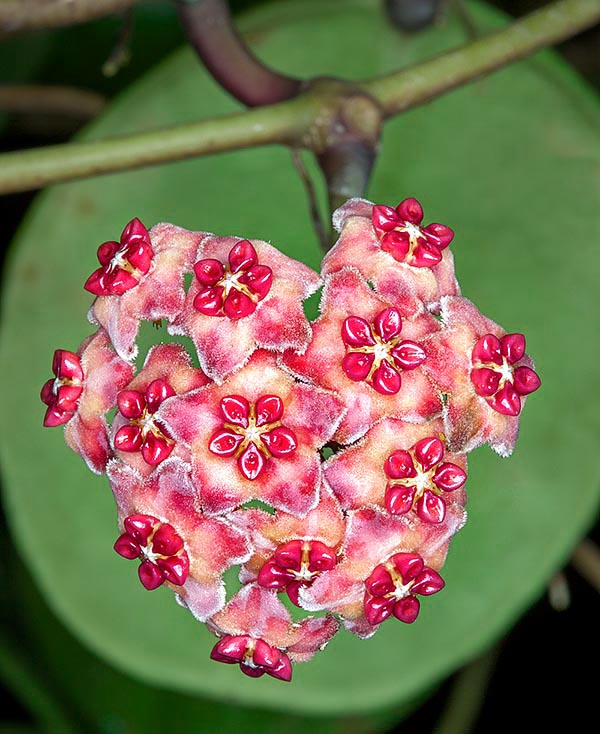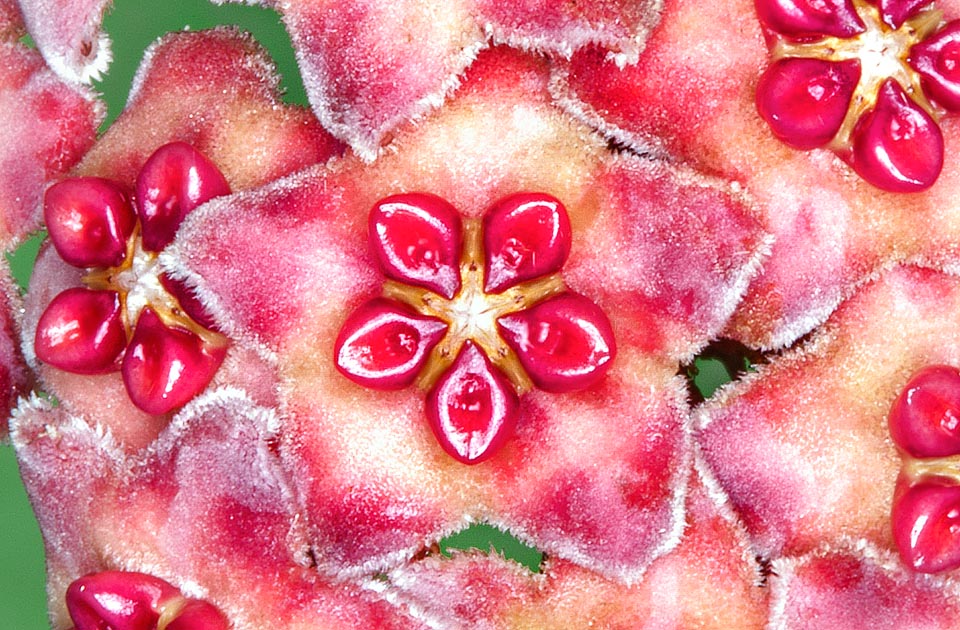Family : Apocynaceae

Text © Pietro Puccio

English translation by Mario Beltramini

Climber in Buru, Moluccas, the Hoya excavata climbs the trees for various metres with adventitious roots © Giuseppe Mazza
The genus is dedicated to Thomas Hoy (ca. 1750-1822), botanist and curator of the gardens of the duke of Northumberland; the specific name is the Latin adjective “excavatu, a, um” = hollow, with reference to the segments of the corona.
The Hoya excavata Teijsm. & Binn. (1863) is an evergreen climber with rather rigid stems, even some metres long, provided for all their length and on the nodes with adventitious roots it uses for anchoring on the bark of the trees. The leaves, on a 2-2,5 cm long petiole, are opposite, simple, oblong-ovate with rounded apex ending in a small tip (apiculate) and entire margin, 10-21 cm long and 6-10 cm long, rather fleshy, of intense green colour and glossy above.
Umbel axillar inflorescences, of 12-15 cm of diameter, carrying up to about 25 flowers, of 1,5-1,8 cm of diameter, with corolla of more or less intense pink colour, having 5 ovate lobes with sharp apex, initially stretched that with the time tends to slightly retroflecting, and corona with fleshy subrounded segments, hollow, of intense pink to red colour.
The flowers, rich of nectar, emit an intense fragrance of vanilla and last about two weeks on the plant.
It usually propagates by cutting, utilizing portions of stem with at least 2 nodes, placed in sandy loam or agriperlite maintained humid at a temperature of 26-28 °C, and by air-layering. Less frequently it reproduces by seed, in late spring, put superficially on draining organic loam maintained constantly humid, but without stagnations. Fast growing vigourous species, cultivable in open air in the tropical and humid subtropical climate zones in very luminous position, like filtred sun light or slight shade. Elsewhere, it is to be cultivated in pot, guided on robust supports, to be transferred during the coldest months in a sheltered location with high humidiry, also some hours of direct sun in the morning, and lowest temperatures preferably over the 16 °C.

The umbel inflorescences, 12-15 cm broad, carry even 25 flower of 1,5-1,8 cm. Characteristic are the fleshy subrounded hollow segments coloured of intense pink or red © Giuseppe Mazza
The repottings are to be done when the substratum gives signs of deterioration, preferably between spring and early summer, leaving the plant dry for various days, till when the hints of vegetative regrowth are noted.
Synonyms: Hoya cunninghamii Teijsm. & Binn. (1863).
→ To appreciate the biodiversity within the APOCYNACEAE family please click here.
